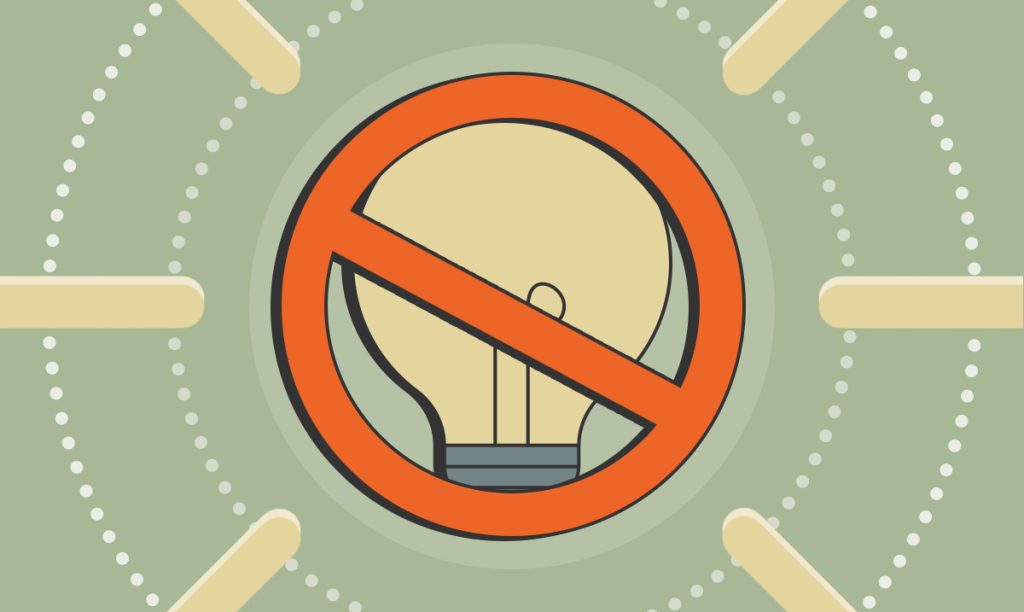What to do if you’re itching to start a business, but that perfect idea just doesn’t come to mind? Luckily for you, we have an answer (or rather ...
14 Key Factors Entrepreneurs Consider When Selecting a Business Logo
Written by: Carolyn Young
Carolyn Young is a business writer who focuses on entrepreneurial concepts and the business formation. She has over 25 years of experience in business roles, and has authored several entrepreneurship textbooks.
Published on June 6, 2024

Selecting the right logo is a crucial step for future business owners as it encapsulates their brand’s essence and values. We gathered insights from CEOs, founders, and marketing heads and gained valuable knowledge on the importance of professional design and cultural sensitivity. Here are fourteen pieces of advice these experienced entrepreneurs have to share. Let’s dive in!
1. Invest in Professional Logo Design
You should get professional help with your logo design. A professional designer can bring expertise and an objective perspective. They will also make sure that your business logo looks good while effectively communicating your brand message and values.
While it might be an upfront investment, a professionally designed logo can pay dividends in establishing a strong brand presence.
Michael Nemeroff, co-founder & CEO of Rush Order Tees
2. Align the Logo With the Brand and Culture
When choosing a logo, think of your company culture and brand. The design (font and colors included should closely mirror your brand’s image.
The personality of your business should also be reflected in the font. If you have a modern company, don’t go for an archaic font. Also, your font should be compatible with the overall logo design.
Your logo — and specifically its color(s) — should be unique and not look similar to any other logos, especially those within your industry. It would be best to create a simple design that’s easy to recognize and simple to reproduce/print.
Shelley Grieshop, writer at Totally Promotional
3. Create a Flexible Logo Design
I would recommend you incorporate flexibility into your logo design. Flexibility means creating a logo that can easily be adapted for special occasions, events, or different business divisions without losing its core identity.
This way, you can use your logo creatively across various campaigns and contexts, which will keep the brand fresh and engaging.
Tom Golubovich, head of marketing at Ninja Transfers
4. Consider Color Psychology and Uniqueness
As someone who creates logo stickers and has worked with various clients, I would suggest you think of your logo as a visual representation of your brand’s identity. When selecting colors, consider the psychological impact they might have.
Blue often symbolizes trust and dependability, and green often means growth and renewal. The symbols and design should be both simple and memorable!
Strive for uniqueness above all else! There should be a distinction between your and your competitors’ logos — and it should be easily identifiable. It should take just one look for someone to recognize your brand.
Whether it’s a name-based or symbol-based logo, it should be a universal design that speaks to your diverse user base. The decision, however, isn’t always binary. Many successful brands use a combination of both — a symbol that can stand alone and a name that can be added when necessary.
David Rubie-Todd, co-founder & marketing head of Sticker It
5. Seek External Feedback on Your Logo
Ask for honest feedback from people outside your business. Sometimes, as entrepreneurs, we can be too close to our projects and miss how others perceive them.
If you do this, you’re sure to collect precious insights from other people and see your logo from a different perspective. After all, you need to ensure it appeals to a broader audience.
Gillian Dewar, chief financial officer of Crediful
6. Combine Simplicity With a Story
In my experience, the key is blending simplicity with a story. Think of Apple’s iconic logo — it’s not just an apple but a symbol of knowledge and innovation. When selecting colors, consider the psychology behind them. For instance, blue conveys trust and dependability, which is vital for my software research company, where reliability is paramount.
Symbols in a logo should resonate with your business ethos. Our logo, a series of interconnected nodes, represents data networks and the collaborative nature of our team. So, it’s not just an image but a narrative of our mission.
Design-wise, aim for timeless over trendy. A logo that feels contemporary today might not age well. You need to keep in mind that this symbol will represent your brand for years to come.
Your logo is your silent ambassador, so make sure it speaks the right language!
Ankit Prakash, founder of Sprout24
7. Opt for a Concrete Logo Design
Many future business owners are inspired by huge enterprises when they consider logo design. They gravitate toward abstract shapes like Nike’s tick or the Apple logo. While your logo shouldn’t be cluttered, these classic designs work because enterprises have the marketing budgets to make them instantly recognizable.
As a new business, your logo and branding need to be concrete. By creating a logo that is symbolic of your values, product, or service, you do what you say on the tin.
Consider the simplest image that represents your business and choose a design that will work both online and in print. You don’t want to leave potential customers guessing what it is you do, and following this approach will improve your branding.
Allison Carmichael, co-founder & art director of Indigoextra Ltd
8. Evoke Emotion With Logo Elements
My advice is to think about the emotion you want your logo to evoke. A logo is often the first interaction someone has with your brand, and it sets the tone for their overall perception of your business.
For instance, soft, rounded shapes can convey friendliness and approachability, while sharp, angular shapes might communicate precision and professionalism. Choose design elements that align with the emotional response you want to evoke in your audience.
Rex Huxford, director of demand generation at MD Clarity
9. Match Logo Colors to Brand Keywords
I had to handle this question as I was building my startup. I paid a bit of attention to it, but with so many decisions to make, it was hard to spend too much time on it.
My advice is to first determine the keywords you want your business to be known for from a macro perspective. Do you want to be sleek and glossy, authentic and raw, good and wholesome, bad and fiery, or something else?
After you figure that out, find some colors that match those general ideas. Blue relates to trust. Red relates to passion and fire. Yellow relates to friendliness and youth. White is purity and virtue. Black is luxury and formality.
Look at big brand logos and see if your inference is correct by imagining your brand with those types of colors. Does it work for your brand?
Brill Media chose blue for trust and orange for confidence since advertising is a partnership that requires a great deal of trust between client and agency.
Then, to decide on specific colors, you’ll need to play around with Canva or Photoshop to find the right shades. Look for a design tool to help you match complementary colors.
Note the color codes for future use.
Don’t forget to also find some secondary and tertiary colors, like light versions of your primary colors that look almost gray, or find completely opposite colors. You’ll need them for accents and such.
You’re done!
Robert Brill, CEO of Brill Media
10. Prioritize Simplicity and Clarity
As an entrepreneur who has created a memorable logo, I believe that future business owners should prioritize simplicity and clarity in their logo design. A cluttered or overly complex logo can be difficult to remember and understand.
When you distill the brand’s essence into a clean and straightforward design, you can create a logo that is easily recognizable and leaves a memorable impression on the minds of customers.
Gillian Perkins, CEO of Startup Society
11. Choose a Timeless, Versatile Logo
Choosing a logo is like picking your business’s handshake — it’s the first thing people feel about you. It’s got to be simple but punchy and timeless enough that it won’t go out of style. Your logo should fit anywhere, from a business card to a billboard, and always bring a nod of recognition.
Colors stir up feelings and tell your story, so go with what feels true to your brand and will also pop into people’s minds. Take our logo as an example — the blend of blues and purples signals creativity and trust. It visually communicates our business’s modern approach and stands out in a sea of more traditional designs.
In the end, your logo should feel like your business: familiar, unique, and unmistakable. Keep it simple, but make it bold — something that can stand alone without all the fuss.
Paul Chow, co-founder & CEO of Design Dynamics
12. Share Your Logo’s Backstory
I advise future business owners to think about the story behind their logo. A logo isn’t just a visual mark but an embodiment of your brand’s story and values.
Sharing the story behind your logo can be a powerful tool in building a connection with your audience. It adds depth to your brand and can make your logo more than just a symbol.
Rosie Langello, founder of Book Vibe
13. Ensure Cultural Sensitivity in Logo
Consider the cultural implications of your logo design, especially if you plan to operate in international markets.
Certain colors, symbols, or even animals can have different meanings in different cultures. It’s essential to research and ensure that your logo is culturally sensitive and doesn’t unintentionally offend any audience.
Chad Sultana, founder of Chad Sultana — Marketing Consulting
14. Conduct a Thorough Trademark Search
A vital stage in the branding process is ensuring that your logo design doesn’t include any potential trademark infringements. You must do a thorough trademark search to identify any existing trademarks that may be confusingly similar to your design.
If in doubt, consult with an intellectual property attorney to protect your business. You want to avoid legal difficulties when building your distinct brand identity, so make sure to follow these precautions!
Hans Mast, travel agent at Golden Rule Travel
Subscribe to Our Newsletter
and gain insider access to cutting-edge business insights and trends.
Featured Resources

I Want to Start a Business But Have No Ideas
Published on August 7, 2024
Read Now

Customer Relationship Management Best Practices
Published on July 30, 2024
Customer relationship management (CRM) is no longer just a transactional process. Now, it’s a must for any business looking to thrive in thiscusto ...
Read Now

Funding Solutions for Small Businesses
Published on July 30, 2024
Starting a small business is more than just a dream; it’s a bold leap into innovation, passion, and resilience. Yet, one of the most dauntingchall ...
Read Now
Comments